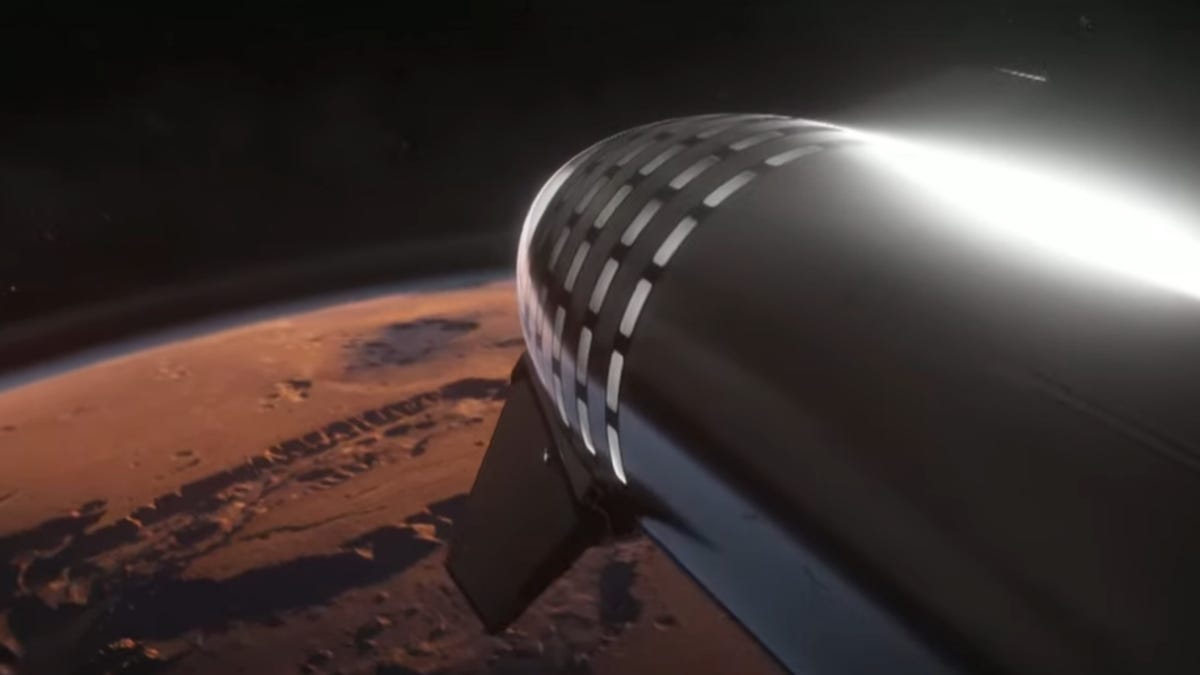SpaceX President Predicts People on Mars This Decade
Elon Musk still has reservations on the red planet for 2029.

The Starship flies over Mars in a hype video from SpaceX
SpaceX still envisions boots on Mars by 2030 and the rocket that will make the trip heading to orbit for the first time as soon as next month. "We should put people on the surface of Mars... in this decade," SpaceX President and COO Gwynne Shotwell told CNBC. "People on the moon, sooner."
The timeline reiterates what company founder Elon Musk predicted in March when he said he hoped to see a crew on the Red Planet by 2029. At one point he had hoped to put humans on our neighboring planet as early as 2024, but as Musk himself frequently acknowledges, his targets tend to slip.
As for the moon, NASA has contracted with SpaceX to use its Starship rocket to take Artemis astronauts to the lunar surface. The soonest we'll see that happen is 2025.
Shotwell added during the Saturday interview that she believes a successful uncrewed mission to Mars could galvanize enthusiasm for sending people on routine flights.
"I think we need to get a large delivery to the surface of Mars and then people will start thinking harder about it, and then I think within five or six years people will see that that will be a real place to go."
Potential launch windows for such a payload to the Red Planet exist in late 2024 and 2026.
Shotwell also said last Thursday that Starship's next test flight should take place in June or July, according to Bloomberg.
Recently the FAA pushed back its target date for wrapping up a required environmental review for the launch, to the end of May. The planned mission will see Starship and a Super Heavy booster launch from Texas and make a quick trip to orbit before making a soft water landing off the coast of Hawaii. The booster, meanwhile, is expected to attempt a landing on an offshore platform in the Gulf of Mexico.

